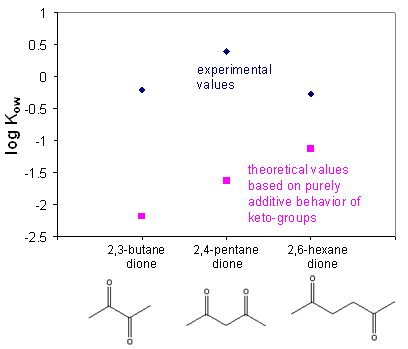Rules for partitioning of various compounds (5/5)
The partitioning of compounds with different functional groups but similar size is obviously determined by the type and number of these functional groups. Unfortunately, there is no simple way for a reliable estimation of the strength of these interactions so that we cannot present any simple rule for this case.
Exceptions
Rules 7 to 10 about the partitioning of various compounds in a given system are very useful when we want to check the plausibility of experimental results or in order to establish quantitative methods for predicting partition constants. Note, however, that rules 7 to 10 are not valid for compound classes that possess two functional groups whose intermolecular distance varies from one molecule to another. An example are 2,3 butanedione, 2,4-pentanedione and 2,5-hexanedione, whose logarithmic partition coefficients do not exhibit a steady trend and which deviate largely from pure additivity (see the figure below).

Download this page as a pdf




 Page 5/5
Page 5/5
